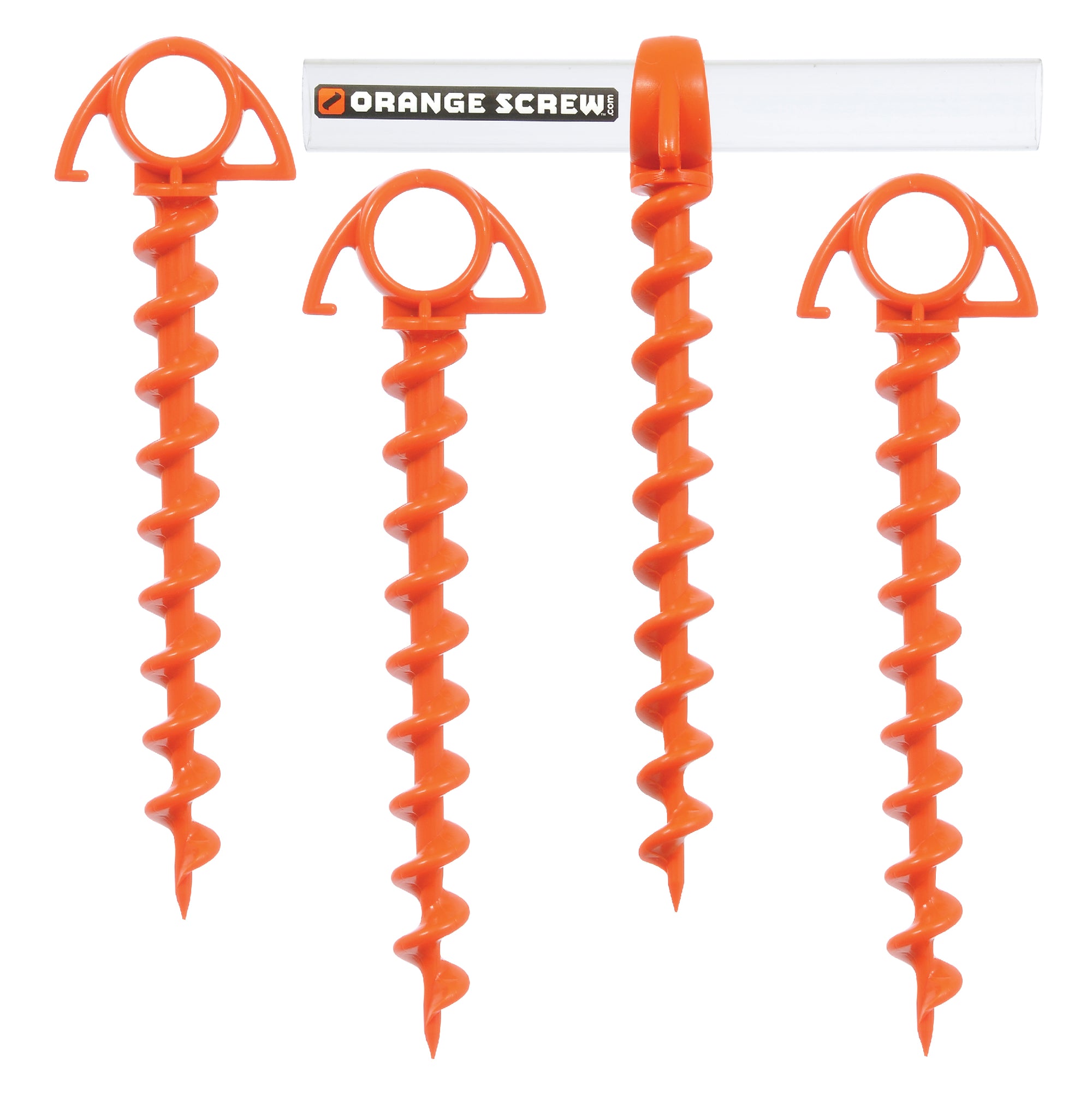Discover the Different Sorts Of Ground Anchor for Your Following Project
When starting a building and construction or landscaping job, understanding the numerous sorts of ground supports readily available is vital to ensuring both security and sturdiness (Ground Anchor). From auger anchors, which master diverse soil problems, to stake supports made for temporary installations, the choices are various. Furthermore, concrete and screw supports existing special advantages in certain circumstances, while deadman anchors are customized for applications calling for resistance to lateral pressures. The choice of an appropriate anchor type can significantly influence the general success of your project, prompting additional exploration into their particular advantages and applications.

Auger Anchors
Auger anchors are a popular choice in different construction and landscape design tasks because of their unique style and effective anchoring abilities. These anchors contain a helical screw-like shaft that is driven right into the ground, enabling a safe and secure and steady hold. The spiral layout helps with easy installation and makes the most of resistance against lateral pressures, making auger supports specifically efficient in applications such as fence, short-lived frameworks, and erosion control.
The installment process of auger supports is reasonably straightforward. Auger anchors can be easily eliminated and recycled, which includes to their cost-effectiveness and sustainability.
Among the considerable benefits of auger anchors is their capacity to distribute lots evenly across the bordering soil, minimizing the threat of dirt disturbance and lessening environmental influence. In addition, they are less at risk to heaving or loosening with time compared to conventional anchoring methods. Auger supports are an excellent choice for tasks calling for trustworthy and durable anchoring remedies.

Stake Anchors
When it comes to protecting structures in a selection of outdoor applications, stake anchors use a simple and reliable solution. These supports are generally constructed from resilient materials such as steel or aluminum, designed to stand up to environmental stresses while providing optimum security. Their basic style enables for fast installation, making them an ideal selection for temporary or long-term anchoring needs.
Risk anchors are especially useful in safeguarding tents, covers, and other lightweight frameworks versus wind and weather. They function by being driven into the ground at an angle, developing a solid hold that withstands pull-out forces - Ground Anchor. The effectiveness of risk anchors depends upon a number of elements, including dirt type, dampness content, and the angle of setup
For included safety, lots of stake supports include add-on factors for ropes or straps, enabling stress modifications as necessary. In applications such as landscaping or building and construction, they can properly stabilize tools or frameworks on unequal surface. Overall, risk anchors give a flexible and economical option for protecting different exterior installations, making them a favored choice for service providers and DIY fanatics alike.
Concrete Anchors
Concrete supports offer a robust remedy for protecting frameworks to concrete surfaces, making certain stability and security in various applications. These anchors are necessary for jobs varying from property constructions to massive commercial installations. They are available in various types, consisting of growth supports, adhesive supports, and undercut supports, each created for details tons demands and ecological problems.
Development supports rely upon mechanical devices to hold the concrete when mounted. They are ideal for tool to durable applications. Adhesive anchors utilize high-strength epoxy or material to bond the anchor to the concrete, using remarkable load-bearing capabilities, particularly in split concrete situations. Undercut supports create a special form within the concrete, providing outstanding holding power, especially in applications where tensile loads are prevalent.
Picking the ideal concrete anchor involves thinking about elements such as the weight of the lots, the problem of the concrete, and ecological conditions. Proper setup methods are vital to ensure optimum performance and reliability. When carried out properly, concrete anchors dramatically boost the architectural integrity of numerous tasks, making them essential in modern construction methods. Understanding the particular requirements of your job will certainly aid in picking the ideal kind of concrete support for the job.
Screw Anchors

Screw supports are a versatile attaching option that can be efficiently utilized in a selection of applications where traditional concrete anchors might not be enough. These anchors include a helical layout that enables them to be easily driven into the ground, making them suitable for use in dirt and other substrates. Their one-of-a-kind framework gives exceptional holding power and resistance to pull-out pressures, making them appropriate for numerous projects, from landscape design to structural support.
Among the primary advantages of screw anchors is their convenience of installation. They need minimal tools and can commonly be installed without the need for excavation, which conserves both time and labor costs. In addition, screw supports can be removed and recycled, providing a lasting i loved this remedy for short-lived applications.
Screw supports are especially valuable in locations where dirt conditions are challenging, such as sandy or loosened soils. Their capability to be installed at differing depths permits personalization based on details task needs. Overall, screw supports offer a effective and reliable securing technique, making them a superb selection for service providers and engineers looking for reliable options for their projects.
Deadman Anchors
Deadman supports function as a robust solution for stabilizing structures in difficult conditions, particularly where typical anchoring approaches might drop short. These anchors consist of big, heavy things buried underground, which produce resistance versus lateral forces. The design typically involves a straight part, such as a block of concrete or a steel plate, hidden in the soil, to which bands or cables are affixed.
The efficiency of deadman supports depends on their capacity to distribute tons over a larger area, reducing the threat of failure in unpredictable soil problems. They are specifically beneficial in applications such as keeping wall surfaces, short-term structures, and incline stabilization, where dirt motion can endanger the stability of the framework.
Installation of deadman supports calls for cautious planning to ensure they are positioned at the correct depth and alignment, maximizing their load-bearing capacity. While they might call for more labor and product than light-weight supports, their dependability in adverse problems makes them invaluable for long-lasting jobs. Deadman anchors are functional and can be adjusted to numerous applications, making them a go-to selection for designers facing special obstacles in their jobs.
Final Thought
In summary, selecting the appropriate kind of ground anchor is essential for ensuring security and protection in numerous jobs. Auger supports master diverse soil conditions, while stake supports suit short-lived applications. For concrete surfaces, expansion and glue supports offer trusted choices, and screw anchors offer adaptability in tough surfaces. Deadman supports are specifically efficient in withstanding lateral pressures for maintaining wall surfaces. Cautious factor advice to consider of these alternatives will certainly enhance task end results and structural honesty.
Additionally, concrete and screw anchors present one-of-a-kind benefits in specific scenarios, while deadman supports are tailored great post to read for applications calling for resistance to side forces - Ground Anchor.Auger anchors are a prominent option in different construction and landscape design projects due to their one-of-a-kind style and effective anchoring capabilities. They come in different types, consisting of development anchors, adhesive anchors, and undercut supports, each designed for certain lots needs and ecological conditions
Sticky anchors use high-strength epoxy or resin to bond the support to the concrete, offering exceptional load-bearing abilities, specifically in fractured concrete situations. In general, screw anchors supply a trustworthy and efficient anchoring method, making them an outstanding choice for engineers and contractors looking for reliable options for their jobs.
 Kel Mitchell Then & Now!
Kel Mitchell Then & Now! Destiny’s Child Then & Now!
Destiny’s Child Then & Now! Barry Watson Then & Now!
Barry Watson Then & Now! James Van Der Beek Then & Now!
James Van Der Beek Then & Now! Morgan Fairchild Then & Now!
Morgan Fairchild Then & Now!